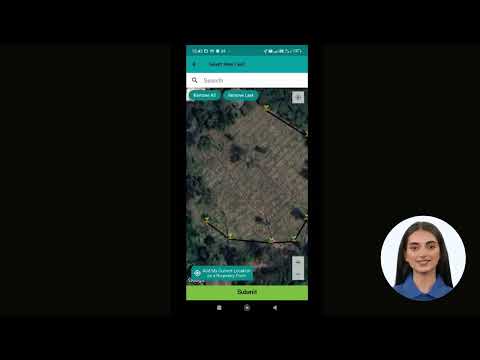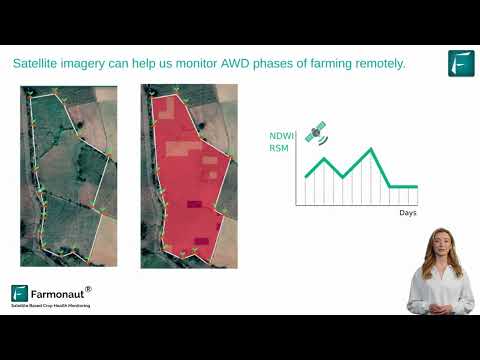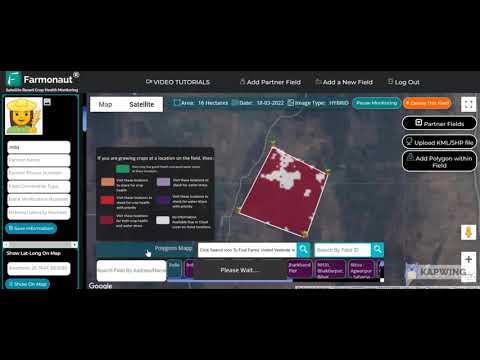Revolutionizing Australian Agriculture: How Digital Ag Tech and Sustainable Practices Are Shaping the Future of Farming
“Australian farmers using digital agriculture tools have seen up to 25% increase in crop yields.”
In the vast and diverse landscapes of Australia, a quiet revolution is taking place. The agricultural sector, long known for its resilience and innovation, is undergoing a transformative shift towards digital agriculture and sustainable practices. We’re witnessing a remarkable convergence of technology and tradition that’s reshaping the future of farming in this sunburnt country. From the sprawling wheat fields of Western Australia to the lush vineyards of the Barossa Valley, farmers are embracing precision farming technologies and sustainable agriculture practices with open arms.
In this comprehensive exploration, we’ll delve into how digital ag tech and sustainability are revolutionizing Australian agriculture. We’ll uncover the latest agtech innovations transforming crop management solutions and livestock farming, and examine how agricultural data analytics are boosting productivity across various sectors. So, whether you’re a seasoned farmer, an agronomist, or simply curious about the future of food production, join us as we embark on this journey through the changing landscape of Australian agriculture.
The Digital Revolution in Australian Farming
The Australian agricultural sector has always been at the forefront of innovation, but the recent surge in digital agriculture tools has taken farm management to unprecedented heights. Let’s explore some of the key technologies that are making waves across the country:
- Precision Farming Technologies: These tools allow farmers to manage their fields with exceptional accuracy, optimizing resource use and maximizing yields.
- Smart Irrigation Systems: Water is precious in Australia, and these systems ensure not a drop is wasted.
- Agricultural Data Analytics: Big data is transforming decision-making processes on farms of all sizes.
- Farm Management Software: From planning to harvest, these platforms streamline operations across the board.
One company at the forefront of this digital revolution is Farmonaut, offering advanced satellite-based farm management solutions. Their platform provides real-time crop health monitoring, AI-based advisory systems, and resource management tools, making precision agriculture accessible to farmers across Australia.
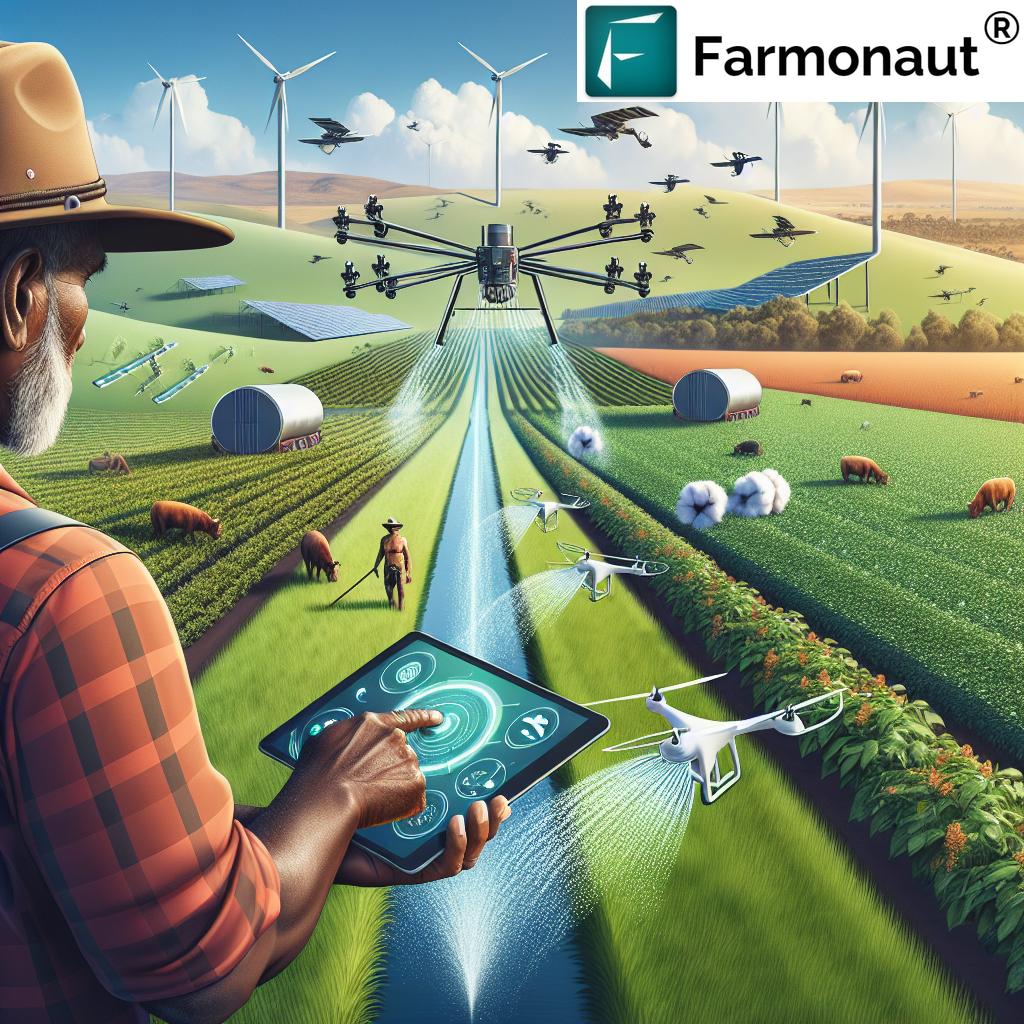
Sustainable Agriculture Practices: The Backbone of Future Farming
Alongside digital innovation, sustainable agriculture practices are becoming increasingly crucial in Australia. These methods not only help preserve the environment but also ensure long-term productivity and profitability for farmers.
- Conservation Tillage: Reducing soil disturbance to improve soil health and water retention.
- Crop Rotation: Enhancing soil fertility and breaking pest cycles naturally.
- Integrated Pest Management: Using biological controls and targeted interventions to minimize chemical use.
- Water Conservation: Implementing efficient irrigation systems and water-saving techniques.
These practices are not just good for the environment; they’re proving to be excellent for the bottom line as well. Many Australian farmers are finding that sustainable methods lead to reduced input costs and improved crop resilience.
Precision Farming: A Game-Changer for Australian Agriculture
Precision farming technologies are revolutionizing how Australian farmers manage their land and resources. By leveraging data from satellites, drones, and ground sensors, farmers can make informed decisions about every aspect of their operations.
- Variable Rate Technology (VRT): Allows for precise application of inputs like fertilizers and pesticides.
- GPS-Guided Machinery: Ensures accurate planting, spraying, and harvesting with minimal overlap.
- Remote Sensing: Provides detailed insights into crop health and soil conditions.
Farmonaut’s satellite-based crop health monitoring system is a prime example of how precision farming is being implemented across Australia. By providing real-time data on vegetation health and soil moisture levels, farmers can make timely decisions that optimize crop yields and reduce resource wastage.
Agricultural Data Analytics: Turning Information into Action
The power of data in modern farming cannot be overstated. Agricultural data analytics are providing Australian farmers with insights that were unimaginable just a few decades ago.
- Yield Prediction: Using historical data and current conditions to forecast crop yields.
- Weather Forecasting: Providing hyperlocal weather predictions to inform farming decisions.
- Market Analysis: Helping farmers make informed decisions about what to plant and when to sell.
Platforms like Farmonaut’s Jeevn AI Advisory System are taking data analytics to the next level, offering personalized farm advisory tools that deliver real-time insights and expert crop management strategies.
Smart Irrigation Systems: Conserving Australia’s Precious Water
“Sustainable agriculture practices in Australia have reduced water usage by 30% in some regions.”
In a country where water scarcity is a constant concern, smart irrigation systems are proving to be a game-changer. These systems use a combination of soil moisture sensors, weather data, and AI algorithms to optimize water usage.
- Drip Irrigation: Delivering water directly to plant roots, minimizing evaporation.
- Soil Moisture Monitoring: Ensuring water is applied only when and where it’s needed.
- Automated Scheduling: Adjusting watering times based on real-time data and weather forecasts.
By implementing these systems, Australian farmers are not only conserving water but also improving crop health and yields. It’s a win-win for both the environment and the farm’s bottom line.
Digital Agriculture Tools: Empowering Australian Farmers
The adoption of digital agriculture tools is empowering Australian farmers to make data-driven decisions and optimize their operations like never before. From small family farms to large commercial operations, these tools are proving their worth across the board.
- Farm Management Software: Centralizing all aspects of farm operations for better decision-making.
- Mobile Apps: Providing on-the-go access to crucial farm data and management tools.
- IoT Devices: Connecting various farm equipment and sensors for seamless data collection and analysis.
Farmonaut offers a comprehensive suite of digital agriculture tools through its web and mobile apps, making it easy for farmers to track and manage their farms from anywhere. Their API access also allows for integration with other farm management systems, further enhancing the digital ecosystem on Australian farms.
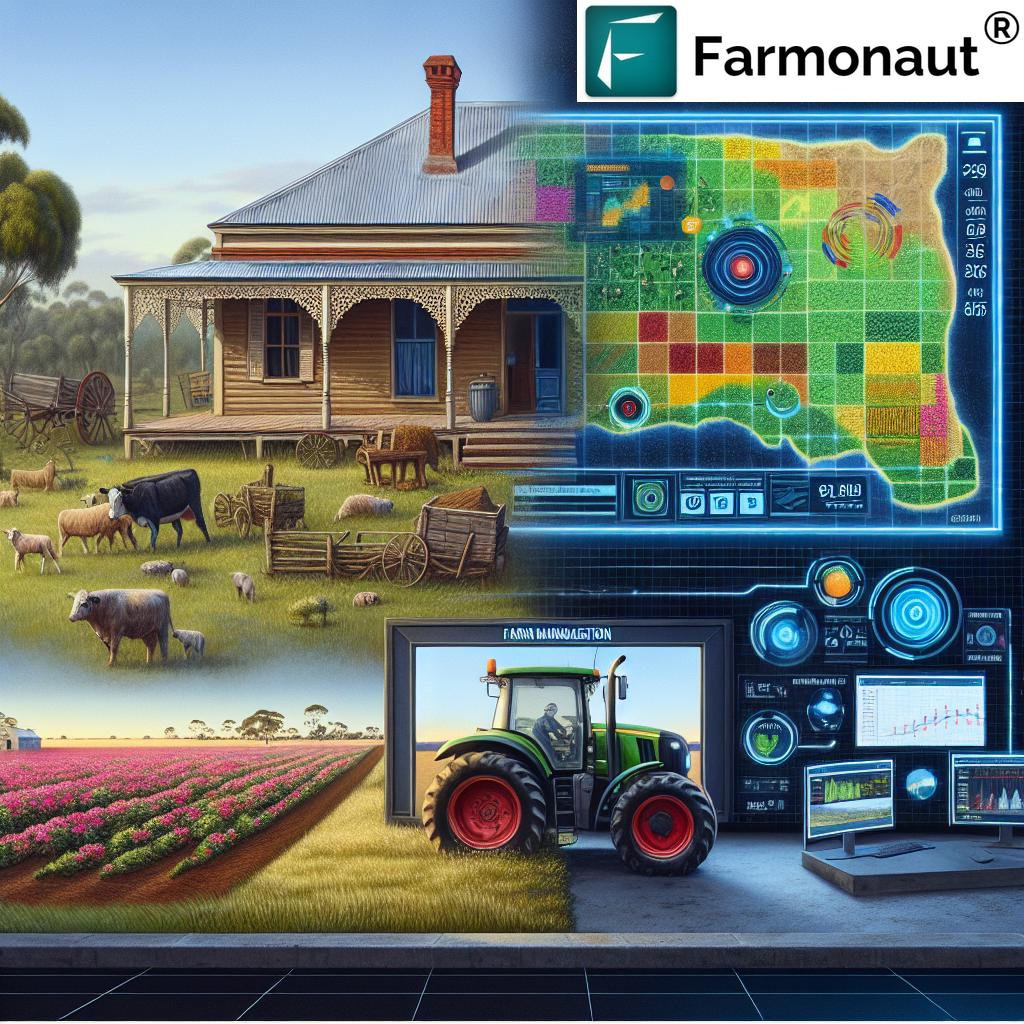
Sustainable Livestock Farming: A New Era for Australian Graziers
The livestock sector is a crucial part of Australian agriculture, and it’s also benefiting from the digital revolution and sustainable practices. From cattle stations in the outback to sheep farms in the southern pastures, graziers are adopting new technologies and methods to improve animal welfare and productivity.
- Precision Livestock Farming: Using sensors and AI to monitor animal health and behavior.
- Rotational Grazing: Implementing smart fencing systems for optimal pasture management.
- Genomics: Leveraging genetic data to improve breeding programs and herd health.
These innovations are not only improving the efficiency of livestock operations but also contributing to more sustainable and ethical farming practices.
Carbon Farming: A New Frontier in Australian Agriculture
As climate change concerns grow, carbon farming is emerging as a significant opportunity for Australian farmers. This practice involves implementing land management techniques that increase carbon sequestration in soil and vegetation.
- Soil Carbon Sequestration: Implementing practices that increase organic matter in soil.
- Agroforestry: Integrating trees into farming systems for carbon capture and biodiversity benefits.
- Methane Reduction: Adopting strategies to reduce methane emissions from livestock.
Farmonaut’s carbon footprint tracking feature is helping agribusinesses monitor and reduce their environmental impact, aligning with the growing emphasis on sustainable and climate-smart agriculture in Australia.
The Impact on Various Agricultural Sectors
The digital revolution and sustainable practices are having a profound impact across various agricultural sectors in Australia. Let’s take a closer look at how these changes are playing out in some key areas:
Broadacre Cropping
In the vast broadacre farms of Australia, precision agriculture techniques are transforming operations:
- Variable Rate Technology: Optimizing input application based on soil and crop needs.
- Automated Machinery: Reducing labor costs and improving efficiency in planting and harvesting.
- Satellite Imagery: Providing comprehensive views of crop health across large areas.
Viticulture
Australia’s wine industry is embracing technology to produce higher quality grapes more sustainably:
- Precision Irrigation: Ensuring optimal water delivery to vines based on varietal needs and weather conditions.
- Canopy Management: Using drones and AI to assess and manage vine canopies for improved fruit quality.
- Disease Prediction: Leveraging weather data and AI to forecast and prevent disease outbreaks.
Cotton Farming
The cotton industry is seeing significant benefits from digital ag tech:
- Water Use Efficiency: Implementing smart irrigation systems to maximize yields while minimizing water usage.
- Pest Management: Using remote sensing to detect and target pest infestations early.
- Yield Mapping: Employing GPS-enabled harvesters to create detailed yield maps for future planning.
Horticulture
From fruit orchards to vegetable farms, horticulture is being transformed:
- Controlled Environment Agriculture: Using IoT devices to optimize greenhouse conditions.
- Robotic Harvesting: Developing and implementing robots for delicate fruit and vegetable picking.
- Supply Chain Traceability: Implementing blockchain technology for improved food safety and transparency.
The Role of Farm Management Software
Farm management software is becoming an indispensable tool for Australian farmers, acting as a central hub for all farm operations. These platforms offer a range of features that streamline farm management and decision-making:
- Crop Planning: Assisting with rotation strategies and resource allocation.
- Financial Management: Tracking expenses, revenues, and profitability across different farm enterprises.
- Compliance Tracking: Helping farmers meet regulatory requirements and certification standards.
- Record Keeping: Maintaining detailed logs of all farm activities for analysis and reporting.
Farmonaut’s platform goes beyond traditional farm management software by integrating satellite-based monitoring and AI-driven insights, providing a comprehensive solution for modern farm management.
The Future of Australian Agriculture: Trends and Predictions
As we look to the future, several trends are likely to shape the continued evolution of Australian agriculture:
- Artificial Intelligence and Machine Learning: Further integration of AI in decision-making processes and predictive analytics.
- Robotics and Automation: Increased use of autonomous vehicles and robotic systems in farming operations.
- Vertical Farming: Expansion of controlled environment agriculture, especially near urban centers.
- Biotechnology: Development of more resilient and productive crop varieties through genetic research.
- Blockchain in Agriculture: Wider adoption for supply chain transparency and product traceability.
These trends, combined with ongoing advancements in sustainable practices and digital technologies, are set to propel Australian agriculture into a new era of productivity and sustainability.
Challenges and Opportunities
While the future of Australian agriculture looks bright, there are challenges that need to be addressed:
- Digital Divide: Ensuring equitable access to digital technologies across rural and remote areas.
- Data Privacy and Security: Protecting sensitive farm data and addressing cybersecurity concerns.
- Skills Gap: Training farmers and agricultural workers in new technologies and data analysis.
- Initial Investment Costs: Overcoming the financial barriers to adopting new technologies, especially for smaller farms.
However, these challenges also present opportunities for innovation, collaboration, and growth within the agricultural sector.
Comparison: Traditional vs Digital Agriculture Practices in Australia
| Aspect | Traditional Agriculture | Digital Agriculture |
|---|---|---|
| Irrigation Methods | Fixed schedule watering | Smart irrigation systems with soil moisture sensors |
| Crop Monitoring | Manual field inspections | Satellite and drone-based remote sensing |
| Yield Prediction | Based on historical averages | AI-driven predictive analytics |
| Pest Management | Scheduled spraying | Precision application based on real-time pest detection |
| Soil Health Analysis | Annual soil testing | Continuous monitoring with IoT sensors |
| Resource Efficiency | Generalized approach | Optimized input use based on specific field conditions |
| Data Collection | Manual record keeping | Automated data collection and analysis |
| Decision Making | Experience-based | Data-driven with AI support |
| Environmental Impact | Variable, often higher | Reduced through precision management |
| Productivity (estimated increase) | Baseline | Up to 25% increase |
Conclusion: A Bright Future for Australian Agriculture
The convergence of digital ag tech and sustainable practices is ushering in a new era for Australian agriculture. From the vast broadacre farms of the wheat belt to the precision-managed vineyards of premium wine regions, farmers across the country are embracing these innovations to boost productivity, enhance sustainability, and secure the future of their operations.
As we’ve explored throughout this article, technologies like precision farming, smart irrigation systems, and agricultural data analytics are transforming every aspect of farming. Companies like Farmonaut are at the forefront of this revolution, providing accessible and powerful tools that put the benefits of digital agriculture within reach of farms of all sizes.
The journey towards a fully digitalized and sustainable agricultural sector is ongoing, and there will undoubtedly be challenges along the way. However, the resilience and innovative spirit that have long characterized Australian farmers will undoubtedly drive continued progress and adaptation.
As we look to the future, it’s clear that Australian agriculture is not just evolving – it’s revolutionizing. By embracing digital technologies and sustainable practices, the sector is positioning itself to meet the growing global demand for food and fiber while also addressing critical environmental concerns. The future of farming in Australia is bright, sustainable, and increasingly digital – a future that promises to keep Australian agriculture at the forefront of global agricultural innovation for generations to come.
FAQs
- What is precision agriculture?
Precision agriculture is a farming management concept that uses digital technologies to monitor and optimize crop production processes. - How does satellite imagery help farmers?
Satellite imagery provides farmers with real-time data on crop health, allowing them to make informed decisions about irrigation, fertilization, and pest control. - What are the benefits of sustainable agriculture practices?
Sustainable agriculture practices help conserve resources, reduce environmental impact, improve soil health, and often lead to cost savings for farmers. - How is AI being used in Australian agriculture?
AI is being used for predictive analytics, automated pest detection, yield forecasting, and personalized crop management recommendations. - What is carbon farming?
Carbon farming involves implementing practices that increase carbon storage in soil and vegetation, helping to mitigate climate change while potentially providing additional income for farmers.
For more information on how you can leverage digital ag tech and sustainable practices on your farm, explore Farmonaut’s comprehensive solutions:
For developers interested in integrating Farmonaut’s powerful agricultural data into their own applications, check out our API and API Developer Docs.

